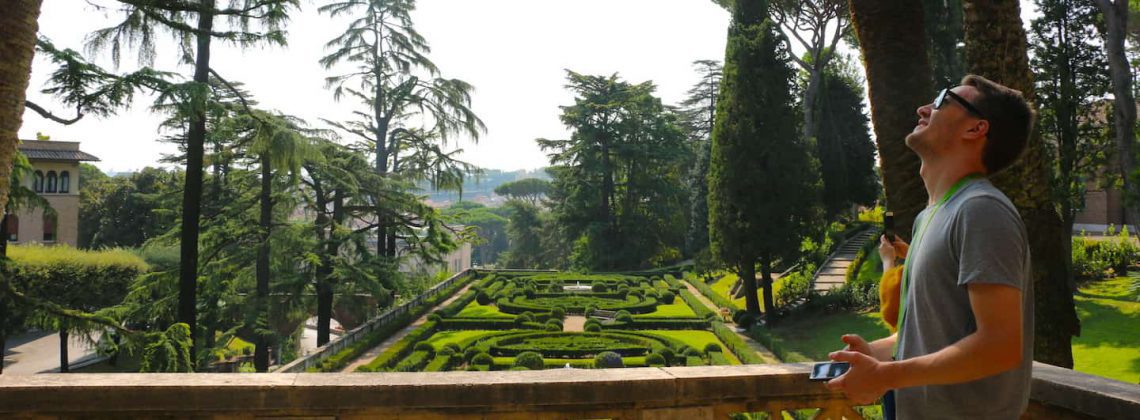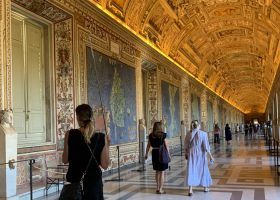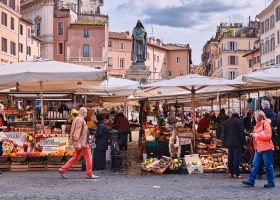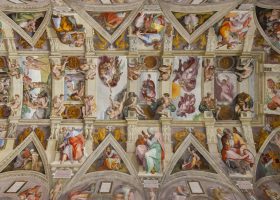Planning a trip to Vatican City and not sure what to see and do in the area? There are definitely no shortages of famous artwork, ancient Roman construction, monuments, and attractions. In this article, we’ll detail what there is to see in and near the Vatican so you can plan the most memorable visit possible.
Pro Tip: If you are heading to Rome consider bookmarking this post which could help you greatly while in Rome. Also, check out our small group Vatican guided tours. We’re rated one of the best if not the best Vatican tour provider in Rome.
Top 10 Things to See & Do Near the Vatican City
After you finish with the 10 things to see near the Vatican, use the toggle menu below to check out another of Rome’s most famous attractions.
10. Castel Sant’Angelo
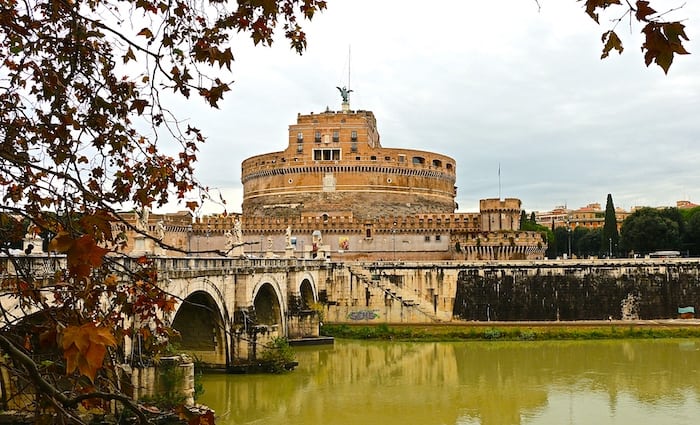
Castel Sant’Angelo is one of Rome’s most iconic and recognized structure which means makes it a top attraction to visit. It is a great structure to enter or view from the outside. In modern times, the last thousand years, it has served as a fortress to protect the Pope in times of invasion.
There is even a secret passage way from the Vatican City to the Castel Sant’Angelo which will read about below. It was originally built in the 2nd century to serve as the Mausoleum of Hadrian which was completed after the death of the great Emperor. The structure was later converted to a fortress due to its strategic location on the Tiber river.
You’ll see the iconic statue of Arch Angel Michael, right hand of god, perched atop of the Castel. Michael sheaths his sword signifying the end fo suffering for mankind.
Address: Lungotevere Castello, 50
9. Ponte Sant Angelo
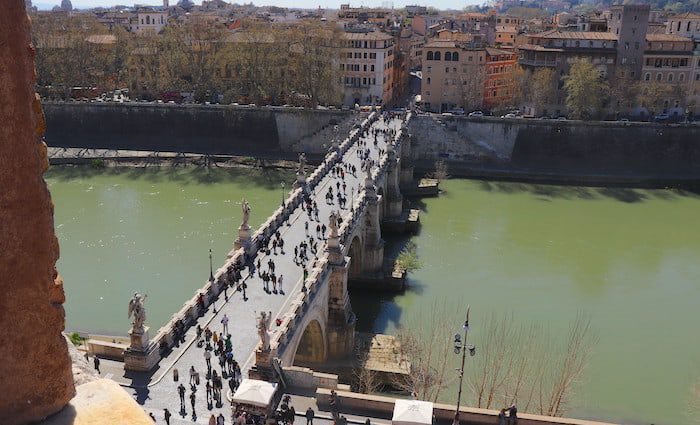
The original construction of the Ponte Sant’Angelo originally took place in 134 A.D. under Hadrian although little remains of the original construction. The original bridge commissioned by Hadrian was named Ponte Aelius which was Hadrian’s family name.
Much of what you see today was added in a 1535 renovation under Pope Clement VII. There are beautiful angels lining the bridge which give it an iconic feel. One of the angels, Angel with the Crown of Thorns, was originally created by Gian Lorenzo Bernini but what you see today is a copy. The original is in Sant’Andrea della Fratte.
You can find the Ponte Sant’Angelo directly in front of the Castel Sant’Angelo. It is a pedestrian bridge which makes it a pleasant and stree-free way to cross the Tiber.
8. Mercato Trionfale
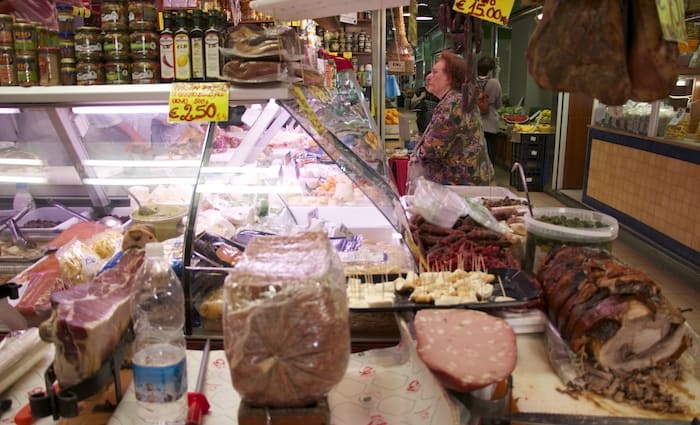
€ | Market/Lunch | Kids | 👣 from the Vatican Museums
You can’t mention eating by the Vatican Museums and Sistine Chapel without mentioning Mercato Trionfale. It is not my number 1 thing to do near Vatican City but a great option. You can pick up some authentic local goods like cured meats and cheeses which are abundant inside. There are a few places for lunch inside or a quick pizza snack but I would probably eat somewhere else near the Vatican City.
Address: Via la Goletta, 1 | Hours: 7 am – 2 pm Monday – Saturday
7. Passetto di Borgo & Sotto Passaggio
To get to the Passetto di Borgo you’ll have to turn left while in St. Peter’s Square facing the St. Peter’s Basilica. Walk through the columns and you’ll see a wall next to the street. On top of the wall is a passageway where the Pope or members of the clergy can walk to get to the fortress Castel Sant’Angelo.
The wall is just over 2600 feet (800m) long and could provide safe passage for the Pope in times of an attack. Today, it is not much more than a wall but the Pope may very well be walking along on top while you are standing below!
There is also good information that says there is also an under-passage known as the sottopassagio below the wall. A second way for the Pope to escape if need be.
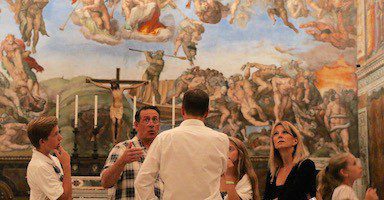
Best Seller
Privileged Entrance Vatican Tour with Sistine Chapel
This our most popular and longest-running Vatican tour to date. You’ll enter the Vatican Museums an hour before the public opening and see the breathtaking Sistine Chapel. Admissions are included and our English-speaking guides do a wonderful job bringing the museums to life!
See Prices
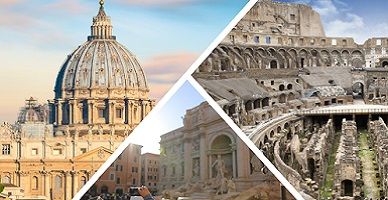
Customer Favorite
Rome in a Day Tour with Vatican, Sistine Chapel, Colosseum, and More!
Looking to get much of your sightseeing done in one day? This tour enters the Vatican an hour before opening and visits the Colosseum along with other sites like the Pantheon, Piazza Navona, and Trevi Fountain. All admissions and transportation are included as well as a licensed, English-speaking guide!
See Prices
6. Vatican Gardens
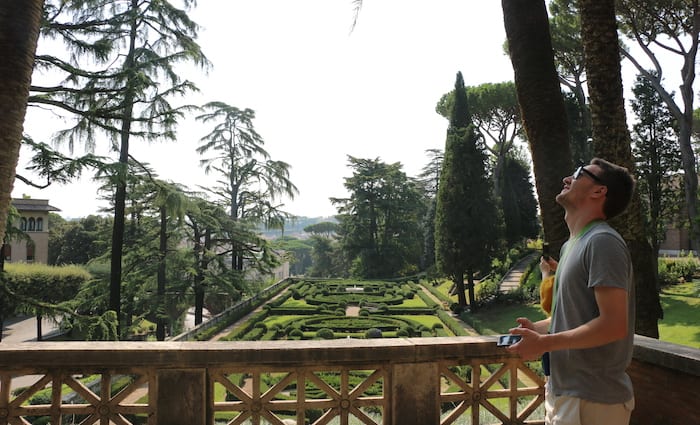
The Vatican City is the smallest country in the world and a sovereign nation completely encircled by walls. Inside those walls are wonders beyond belief. The Vatican Museums, Sistine Chapel, St. Peter’s Basilica, and of course the Vatican Gardens.
They are amazing to visit since you will find so few visitors walking around. We have a cool experience that visits the gardens and goes to the Pope’s summer home in Castel Gandolfo by way of the Vatican train station. It is extremely unique!
5. Vatican Museums
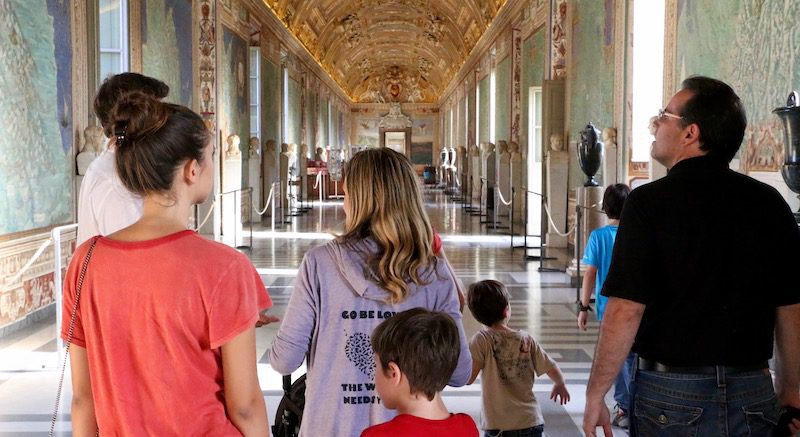
The Vatican Museums are what is referred to as a living museum. It has been the home of the Pope for centuries and is right next door to the Papal administrative offices. There are many galleries to visit and lines can be long to get inside.
If you’d like a more detailed description of the famous artwork inside the Vatican museum check out our article, “60 Famous Artworks, Statues, and Things to See in the Vatican.” It describes many of the most important artwork in considerable length.
You can also join us for one of our many Vatican tours. We are one of the best if not the best Vatican tour provider in Rome.
4. Piazza San Pietro
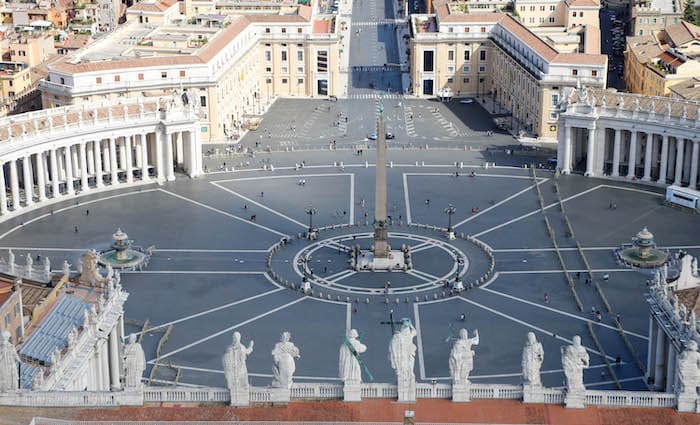
Piazza San Pietro or St. Peter’s Square in English is the 2nd largest square in Rome behind Piazza del Popolo. That said, it would be hard to argue any are more iconic.
The square was largely the work of Gian Lorenzo Bernini and is one of the most recognizable places on Earth. 288 columns open to the world like arms reaching out for a huge.
The square features a central obelisk and two fountains on the right and left hand side. The one on the left when facing the Basilica is the work of Stefano Moderno. On the left, you’ll find Gian Lorenzo Bernini’s work although he designed it to match that of Moderno’s.
Papal audience is held here every Wednesday when the weather is warm which in Rome is most of the time. You can read more about it in our article on Papal Audience in Rome.
3. St. Peter’s Basilica
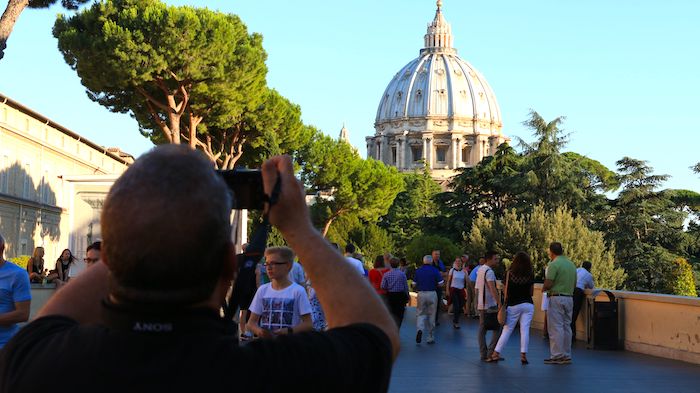
The St. Peter’s Basilica is the most important church in all of Christendom. According to dogma, it is built on top of St. Peter’s tomb making him the “rock upon which I will build my temple,” which were the words of Jesus Christ.
Religious or not, seeing the Basilica and going inside are an absolute must when visiting Rome. The interior is a testament to what our minds can achieve when put to work. It is one of if not the greatest structure ever assembled.
For more information, check out our article, “St. Peter’s Basilica: Facts, History, and What to See.”
2. St. Peter’s Basilica Dome (Climb!)
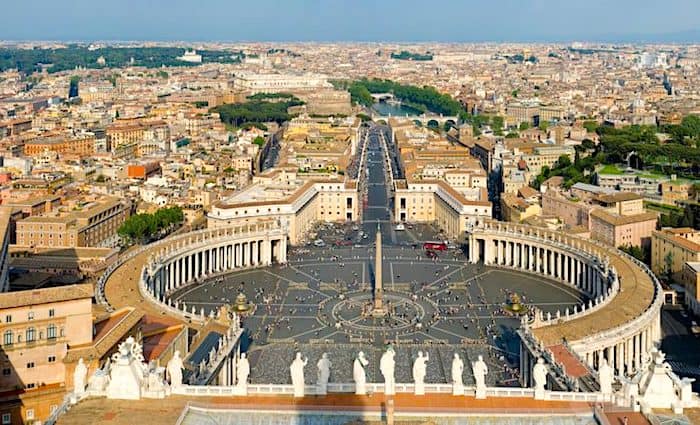
The Dome of St. Peter’s Basilica is yet another incredible creation by the famed Michelangelo. He cannot take all the credit as the foundation was designed by Donato Bramante and later taken over by Raphael but much of it belongs to the master; Michelangelo.
The Dome of St. Peter’s Basilica is 448.1 feet (136.57m) tall which includes the cross at the top. The diameter is 136.1 feet (41.47m). It holds the record for the tallest dome in the world which is impressive since it was completed in 1590 almost 30 years after Michelangelo’s death by Giacomo della Porta and Domenico Fontana under the reign of Pope Sixtus V.
The dome is an incredible accomplishment of engineering and arguably one the greatest accomplishments of the late renaissance although there were many. Today, you can climb up to the top of the Dome which is the tallest building in Rome and the Vatican City by law.
Read more about climbing St. Peter’s Dome.
Learn about our St. Peter’s Dome Climb Small Group Tour.
Top Purchased Rome Tours
1. The Sistine Chapel
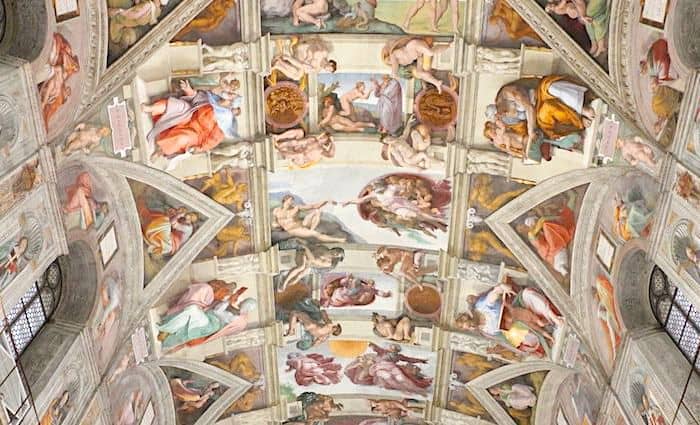
Pope Julius II’s decision to repaint the ceiling probably had to do with structural damage done during the excavations for the Borgia Tower and the new St. Peter’s Basilica which could have become a major issue for this most important chapel. At the time, Michelangelo was working on the Pope’s tomb and seemed to be quite content with it but was swayed elsewhere.
The Artist- Michelangelo
As the story goes, Bramante who was upset with Michelangelo for a previous slight suggested to the Pope that Michelangelo should paint the ceiling. Bramante suggested this knowing Michelangelo was a sculptor and not a painter knowing Michelangelo would not want the commission.
Pope Julius II agreed and had Michelangelo’s sign the contract to paint the ceiling against his will in the year 1508. The original design was to be the twelve apostles, but after Michelangelo objected, Julius put the design in the Master’s hands which is history as we know it. It is very likely the Michelangelo lived inside the Vatican City for the duration of his commission which I think is interesting. One of the rooms you’ll walk through while exploring the museums may have had a bed in it at one time that Michelangelo attempted to visit when he could.
The Ceiling (Most Famous)
The ceiling is a series of figures such as Sibyls, Prophets, and Christ’s forefathers all surrounding the focal point which are the central panels. The central panels depict Genesis and are comprised of 9 “stories” describing the most important thing in all of our existence which is the creation of the World/Universe according to Dogma. This is particularly difficult considering the dimensions and curves of the ceiling. Most other artists would have drawn this out in advance but most other artists were not Michelangelo.
It took four years for Michelangelo to complete and he probably swore never to return in the chapel when it was done. Little did he know that he’d be called back 24 years later to do the Last Judgement on the altar wall of the Sistine Chapel.
The Last Judgement (Most Intriguing)
The depiction of dogma’s Last Judgement in the style of fresco by Michelangelo was one of the last additions to the Sistine Chapel ( finished in 1541). By the time this painting was finished Michelangelo had spent almost 10 years of his life in the Sistine Chapel painting the ceiling and back wall! The Master continues to portray people with huge amounts of muscles as he did with the ceiling which was his way of showing off his ability to detail the human torso – the most difficult thing to do.
Old Testament (Life of Moses) & New Testament (Life of Jesus)
One of the most intriguing things about the Sistine Chapel is some of the most famous artists of the Renaissance had painted frescoes on the walls but visitors rarely seem to notice.
Obviously, those who join our Vatican City tours will discover this detail and readers of our blog like you, but imagine if there was a Sandro Botticelli painting in your house and nobody noticed.
If you walk in from the door over the altar, the Life of Moses is depicted on the right-hand side wall reading from right to left. On the left-hand sidewall, you’ll see the life of Jesus reading from left to right. The reason Moses’ life reads right to left is that Hebrew reads in the same direction which adds depth and meaning to the artwork.
These frescos were done in groups by some of Florence’s most famous artists which are listed here below:
- Sandro Botticelli
- Cosimo Rosselli
- Biagio d’Antonioi
- Luca Signorelli
- Pietro Perugino
- Domenico Ghiraldaio

